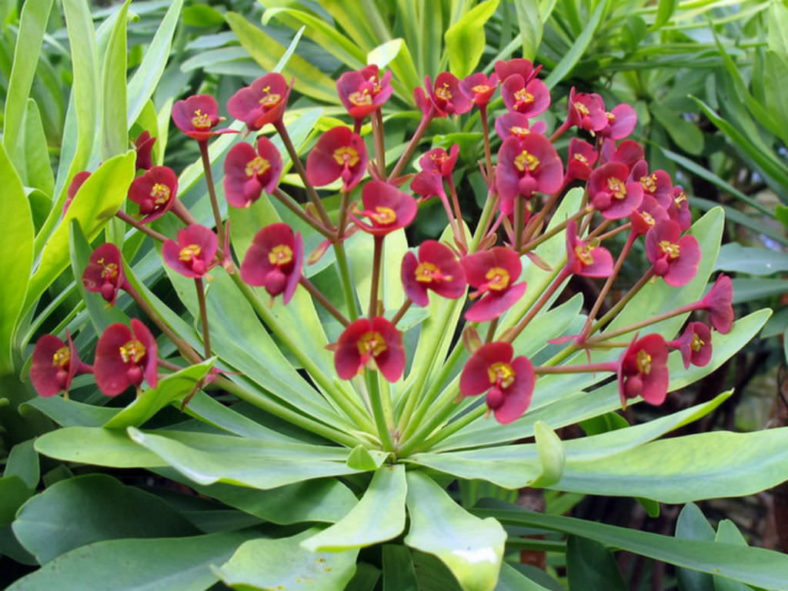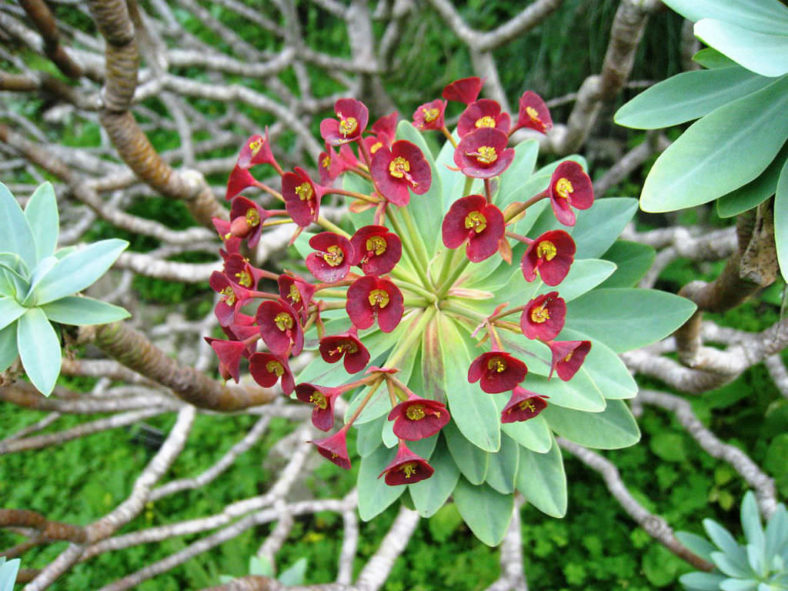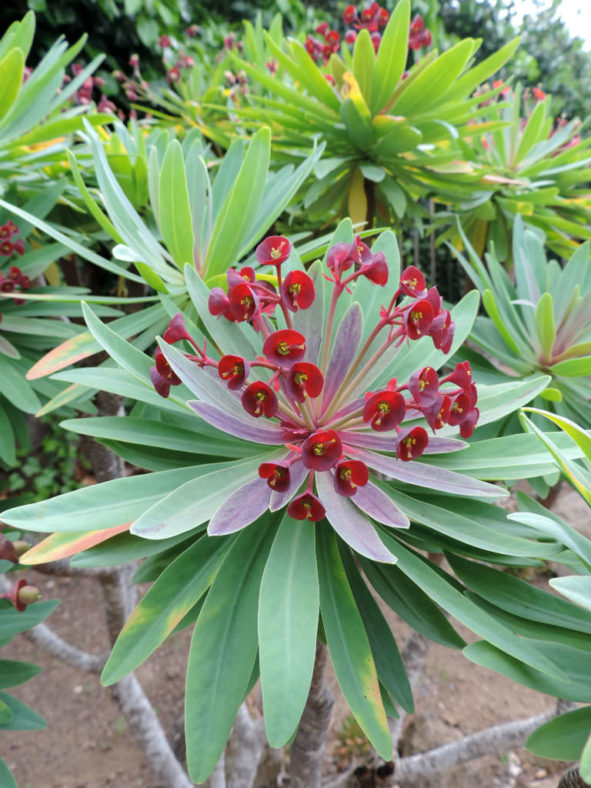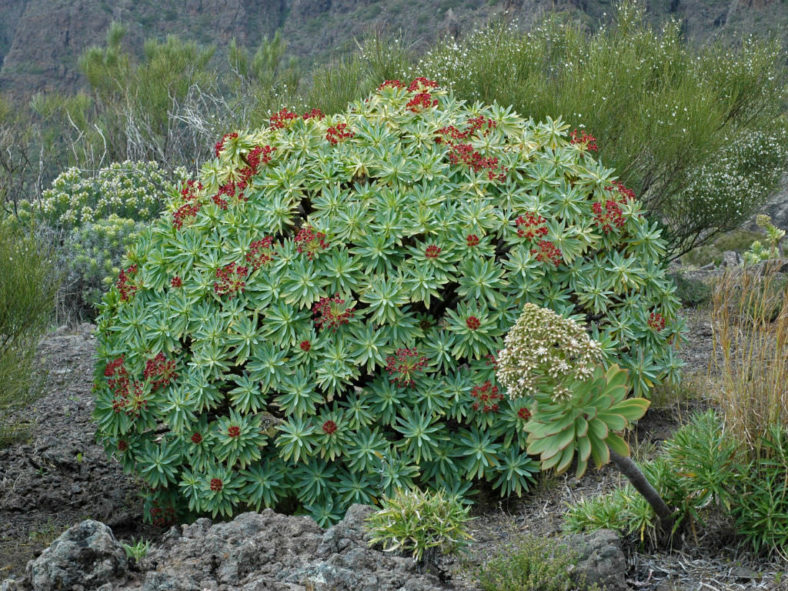Scientific Name
Euphorbia atropurpurea Brouss. ex Willd.
Common Name(s)
Tabaiba Majorera and Tabaiba Roja in Spanish
Synonym(s)
Kanopikon atropurpureum, Tithymalus atropurpureus
Scientific Classification
Family: Euphorbiaceae
Subfamily: Euphorbioideae
Tribe: Euphorbieae
Subtribe: Euphorbiinae
Genus: Euphorbia
Etymology
The specific epithet "atropurpurea" (pronounced "at-ro-pur-PURR-ee-uh") means "dark purple" and refers to the color of the bracts of the cyathium of this species.
Origin
Euphorbia atropurpurea is native to the Canary Islands. It grows in ravines, on slopes, and on terraces at elevations ranging from 980 to 3,940 feet (300 to 1,200 m) in the southern and western parts of the island of Tenerife.
Description
Euphorbia atropurpurea is an attractive, dichotomous branching shrub with large bluish-green leaves arranged in a rosette at the end of brown branches. It can grow up to 6.6 feet (2 m) tall. The branches are spinless, succulent, marked with leaf scars, and can reach up to 0.4 inches (1 cm) in diameter. The leaves are lance-shaped, oblong, or spoon-shaped, measuring up to 3 inches (7.5 cm) long and 0.6 inches (1.5 cm) wide.
The cyathia (false flowers) have deep burgundy bracts and four dark green to violet nectar glands. They usually appear from winter to spring, held on stiff, radiating stems. The fruits are 3-locular red capsules that contain dark brown seeds, one per locule.

Varieties and Forms of Euphorbia atropurpurea
- Euphorbia atropurpurea var. atropurpurea
- Euphorbia atropurpurea var. modesta
- Euphorbia atropurpurea f. lutea
How to Grow and Care for Euphorbia atropurpurea
Hardiness: USDA hardiness zones 11a to 11b: from 30°F (-1.1°C) to 40°F (4.4°C).
Euphorbias are very easy to care for. These plants require a little pampering to become established, but once they are, they are self-sufficient. More die from overwatering and overfertilizing than from neglect. Euphorbias need well-draining soil and lots of sunlight. They are not particular about soil pH, but cannot tolerate wet soil. Unlike most succulents, Euphorbia does not tolerate prolonged drought well. It may need weekly watering during the summer. Water whenever the soil is dry several inches below the surface. Water deeply, but don't let them sit in wet soil, which can cause root rot. Add some organic matter or fertilizer to the planting hole. If you are growing them in containers or your soil is poor, feed them with a half-strength fertilizer monthly.
These succulents can be grown from seed, but germination can be difficult, and seeds may be hard to find. They are usually propagated by cuttings. This can be tricky because of the exuding sap. Rooting hormone is recommended with Euphorbia. They tend to grow problem-free, but there are a few pests and diseases to be alert for.
Learn more at How to Grow and Care for Euphorbia.
Links
- Back to genus Euphorbia
- Succupedia: Browse succulents by Scientific Name, Common Name, Genus, Family, USDA Hardiness Zone, Origin, or cacti by Genus
Photo Gallery
Click on a photo to see a larger version.


